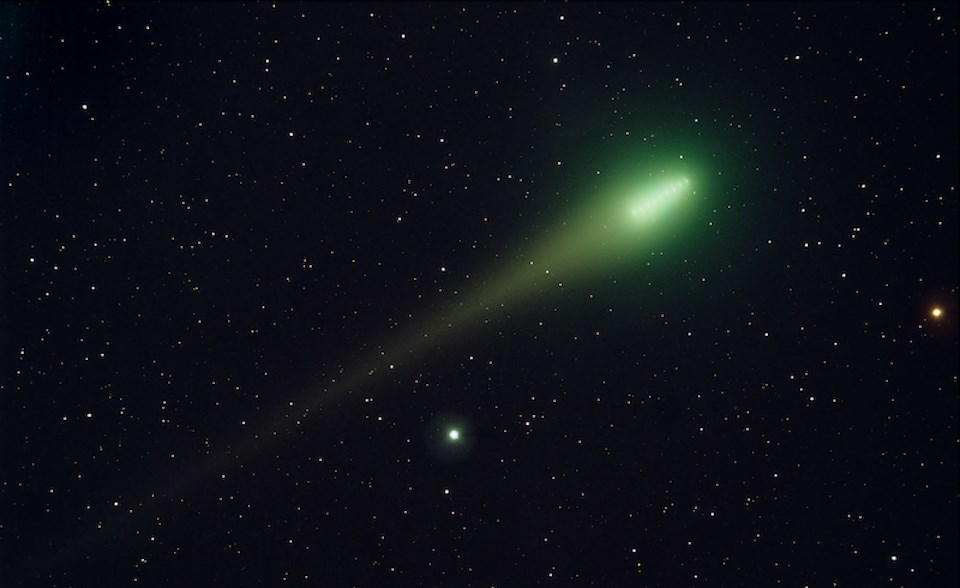A rare comet will pass over Metro Vancouver for the first time in a whopping 50,000 years — or since Neanderthals walked the Earth.
Comet C/2022 E3 (ZTF) was first discovered in March 2022 by astronomers when it "was ," according to NASA.
Marley Leacock, an astronomer at the , told Â鶹´«Ã½Ó³» that scientists spotted the celestial object using the widefield camera at the Zwicky Transient Facility in the Palomar Observatory in California.
Since it takes roughly 50,000 years for the comet to orbit around the sun, "and based on its orbital parameters, it has been classified as a hyperbolic comet," she explained.
This means that the comet most likely originated from the Oort cloud and that this might be the last time it appears in our solar system.
"By definition, a hyperbolic orbit means that the object will only enter the solar system once, so comet C/2022 E3 (ZTF) may leave our solar system entirely," she clarified.
The comet also has a " that may be visible to the naked eye, according to .
Rare green comet NASA viewing tips for 2023 in Metro Vancouver
While Metro Vancouverites may be able to spot the comet with the naked eye, it is a good idea to bring binoculars with 40 to 50-mm apertures or a small telescope if you want to be able to make out detail, Leacock advised.
"If you spot it without a telescope or binoculars, it will most likely look like a faint smudge in the sky. Keep in mind that the moon is also up that night, which may impede some viewing as well. Try to keep your back to it."
The "green comet" is expected to reach about a "magnitude 6 or brighter at the closest approach," which is the dimmest the naked eye can see. The best bet for viewing is to go to a dark sky location outside of the city, Leacock explained.
The celestial body will make its closest approach on Feb. 1 in Metro Â鶹´«Ã½Ó³»and will be visible all night. Since the sun will set around 5 p.m., it will be in the northern sky.
"The comet will be pretty close to the north celestial pole, so using Polaris as a marker and looking around that area is a good start," she said. "At sunset, if you were to hold your fist outstretched and align the bottom of it with the horizon, the comet will be five of those high and to the right of Polaris."
It will be highest in the sky between 9 and 10 p.m., where it will sit roughly two-ish 'fists' above Polaris.



